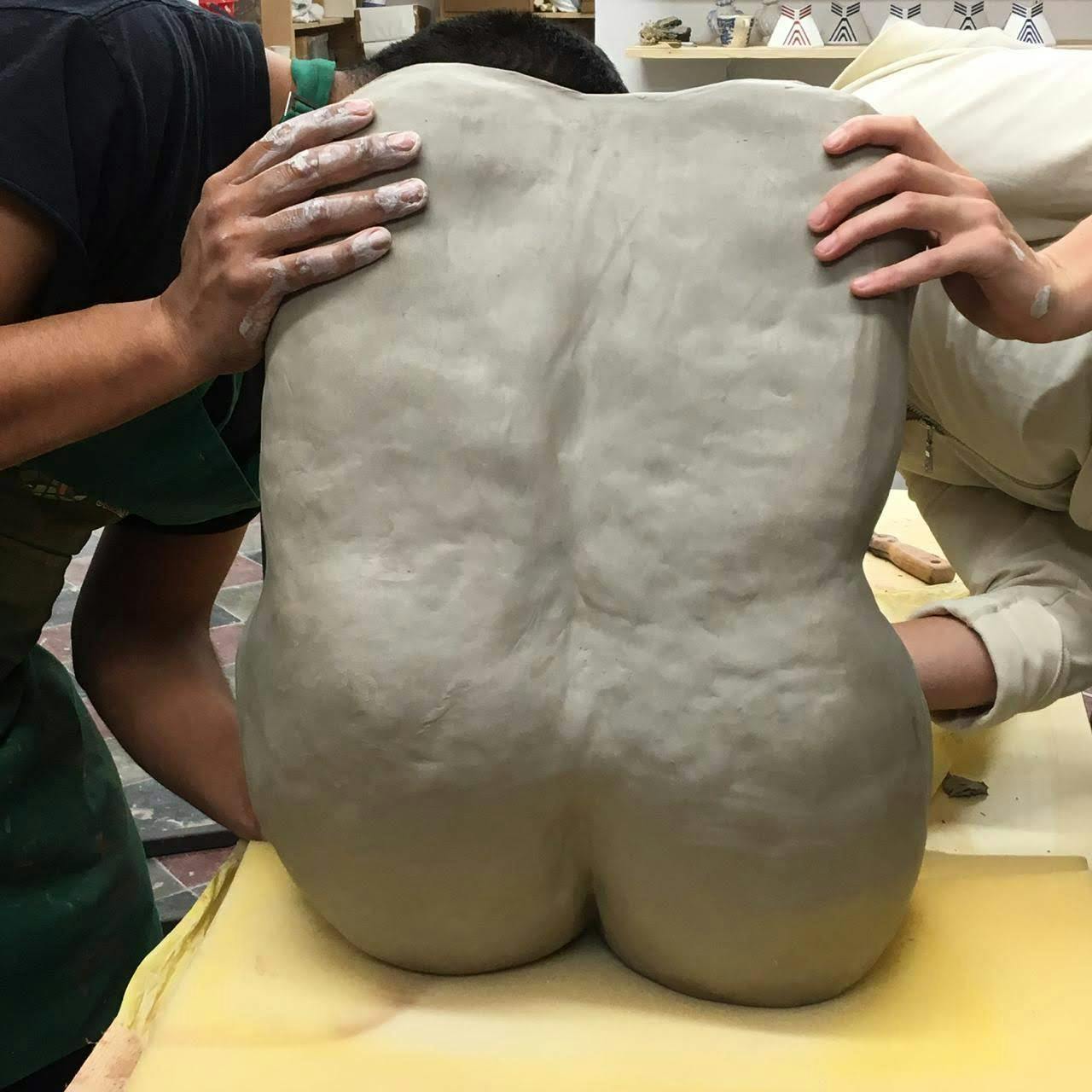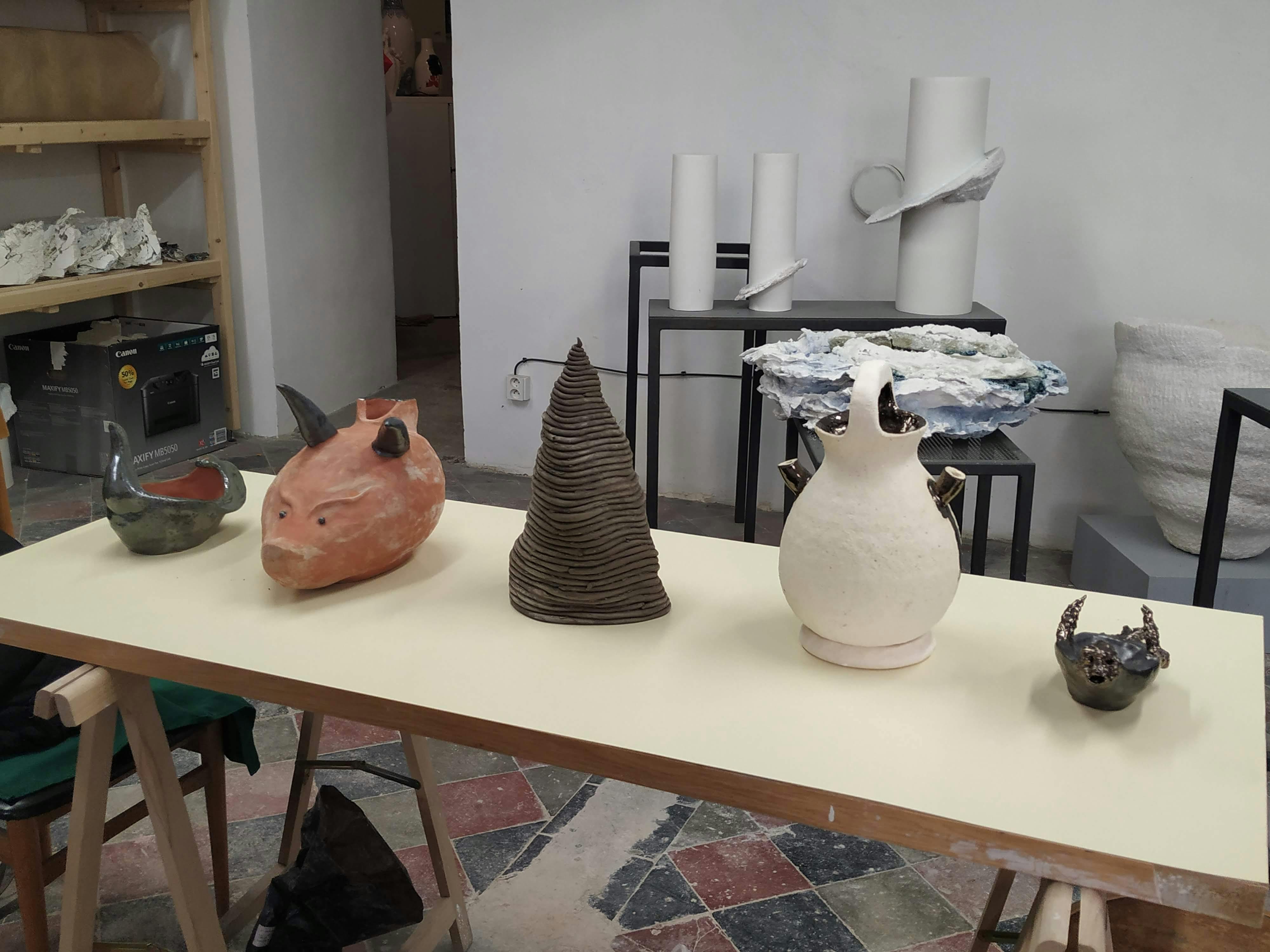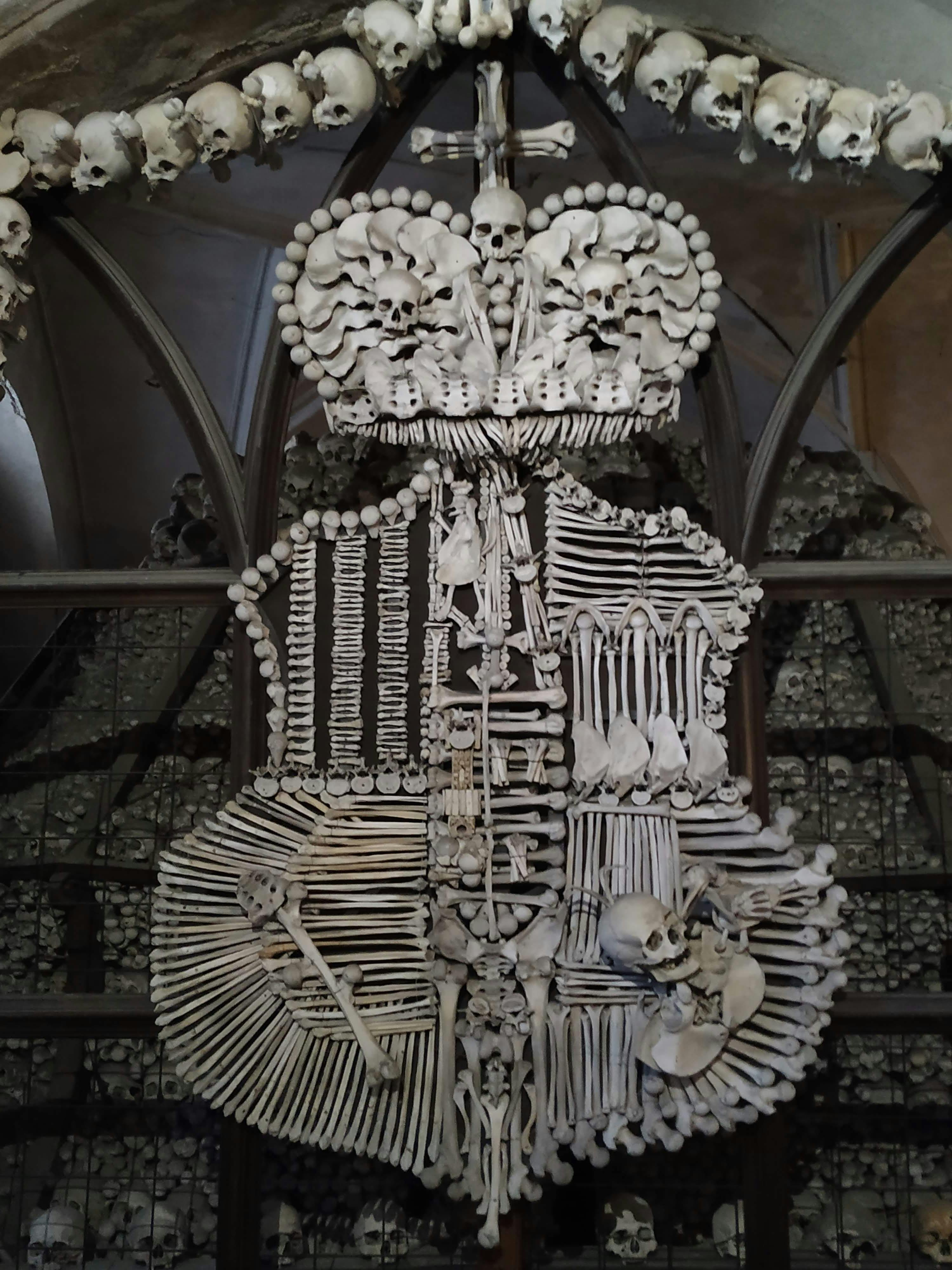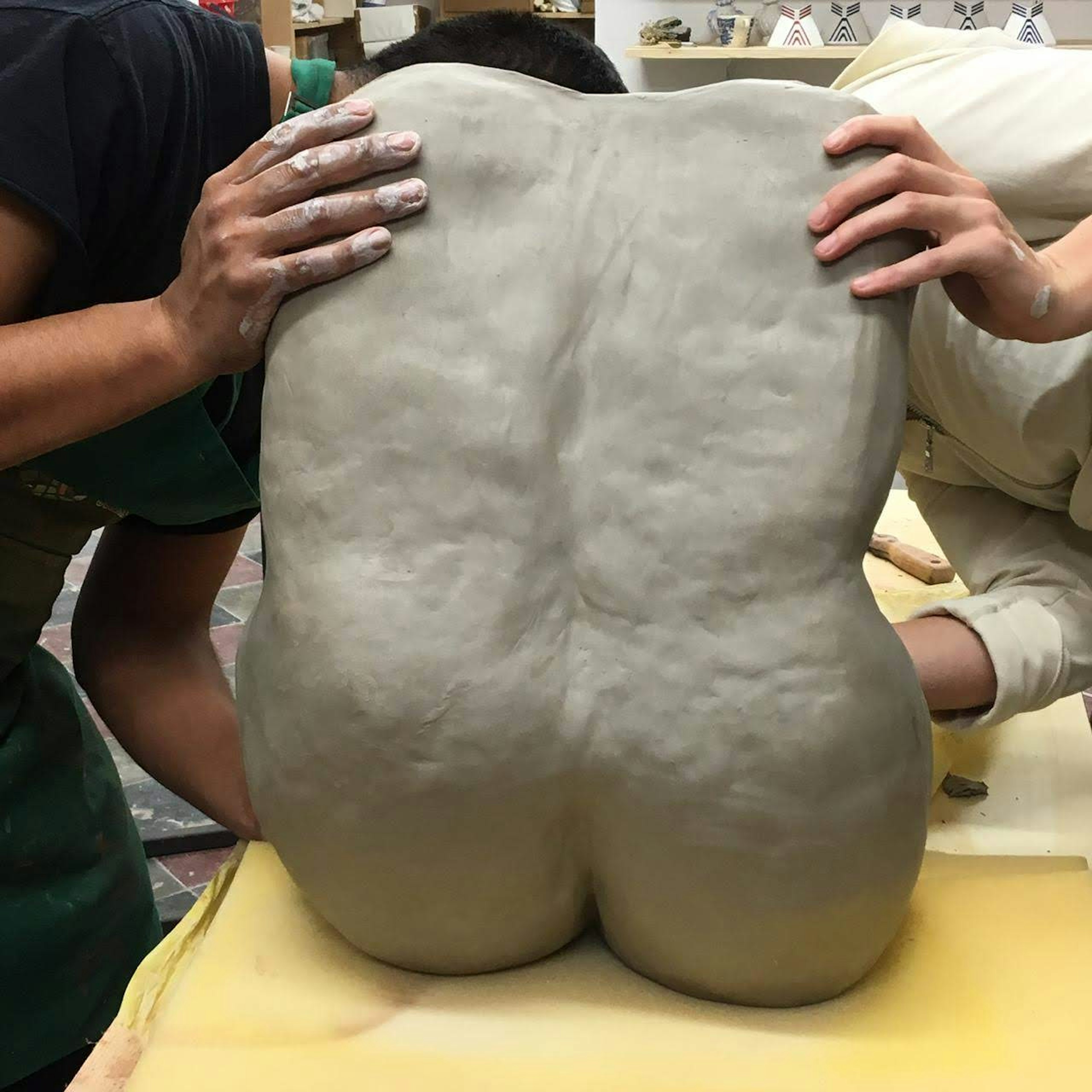SANGREE on their Residency Abroad in Prague






Black Cube organized an international residency exchange in Prague for our Alumni SANGREE. Black Cube’s Program Manager, Hannah James, interviews the artist duo on their time in Prague and how it influenced their practice.
SANGREE on their Residency Abroad in Prague
In 2016, SANGREE produced the exhibition Unclassified Site Museum, as part of the artists’ Black Cube fellowship. For their alumni project, the artists spent four weeks at FUTURA. In exchange, FUTURA selected Czech artist Martin Kohout to spend four weeks in Mexico City at SANGREE’s studio. The international residency exchange was intended to provide an opportunity for artistic research and cultural connection between contemporary artists and new communities. SANGREE is an artistic collaboration between René Godínez Pozas and Carlos Lara.
Hannah James: Was this your first time travelling to Prague? What was your first impression of the city?
René Godínez: Yes. I think it is a very interesting city due to its architecture and historical monuments. What I liked the most was the mobility through the city and how easy it was to use the tramways and subways.
Carlos Lara: I arrived there by bus from Paris, so I didn’t even notice when I entered the country. In the beginning, I felt like it was a small town because the bus left me almost at the entrance of the city. It felt like a good old, small European city.
SANGREE: We had a studio at MeetFactory in Smíchov, which is on the west side of the river. It was an amazing space with many artists and activities; however, we spent most of our time at Eva Pelechova´s ceramic studio in Žižkov. At the beginning, it was sort of strange because Eva had a lot of her work in there and she herself was currently working on some pieces, so it felt a bit like we were invading. But over a couple of days, it felt more natural. It was a very intense learning experience.
HJ: Did you have access to new materials you wouldn’t otherwise have in Mexico City?
S: Yes, but we didn’t realize this until after we returned to Mexico. Ceramics are a pretty common medium and Mexico has a large tradition of pottery and clay. But, it seems very hard to find the right materials and in such a wide variety as we did in Prague. Also, we had access to some high-end glass and porcelain workshops, which the Czech Republic is known for. Having access to those kinds of places is not very common in Mexico City.
HJ: What type of work did you produce during this residency? Was it a departure from or continuation of your wider practice?
CL: We worked with ceramic and porcelain. We actually wanted to work with these materials during our Black Cube fellowship in 2016, but the timing was never good. In Prague, we had the opportunity to work with a very experienced ceramist such as Eva. She let us use her studio and provided us with all the tools and materials. She definitely guided us through the whole process.
HJ: Describe your most memorable experience in Prague.
CL: For me, it’s definitely the journey back home. We were loaded with ceramics and we needed to get them all on the plane. We bought a huge toolbox with lots of foam and wrappings. We had ceramics in our carry-ons, in our checked luggage, in our back packs, and of course, this huge 35 kg overweight container. We had to fit everything in a bus to Paris and then walk all around Paris with the nearly 80 kg of luggage. On our last day, we realized we were on different flights, so René had to stay one more night in Paris. But, he helped me bring everything to airport.
RG: During the residency, we didn’t have much free time. One month for working ceramics is not that much. We had to be in the studio every day, all day, at the studio. However, we had the opportunity to visit Kutná Hora, The Ossuary of Sedlec, which is a must if you are dark in life.
HJ: How did the contemporary art scene in Prague differ from Mexico City? Or, did you find similarities?
CL: What I really liked about the art scene was its infrastructure. Specifically, the studio facilities that don’t, or barely, exist in Mexico City. I mean, we came across at least 4 projects that were entire buildings, or former factories, devoted to studio spaces. Plus, they had a whole program of activities, shows, screenings, lectures, and concerts that made the exchange much more dynamic and exciting than the gallery or museum models.
RG: I also liked the amount of art spaces, museums, and galleries. Many of them receive support from the government and survive thanks to grants. I think it is a very active scene with many artists from abroad living and doing residencies over there. I think the liveliness of the scene makes it a good place for working.
HJ: As part of this international residency exchange, you opened your studio and living space in Mexico City to Czech artist, Martin Kohout. What was it like sharing your artist studio?
CL: It was not that difficult because we already share the space, so we are used to having people and other artists at the studio. Also, I believe Martin’s practice is more about working digitally on images and video, so I barely noticed he had been there when we got back. I was worried about how the neighborhood was going to receive him though because it is not an area where you see too many tourists.
RG: Since the first day we met Martin, he shared with us some good restaurants and interesting places in Prague. While we were in Prague, he was hosted in Mexico City by our best friend, Mariana Mañón. We sort of exchanged lives for one month.
HJ: Did you discover anything new about working collaboratively while abroad?
RG: It was interesting traveling and spending so much time together. It had been a while since the last time we spent that much time together, exchanging ideas and focusing on our work.
CL: It was definitely a great experience to focus 100% on our work.
HJ: Describe your most challenging experience during the residency.
RG: The language. It was not that much of a challenge though. We learned some words, but sometimes it was hard to get our food at a restaurant :P
CL: Overall, the whole trip was very enjoyable. The most challenging thing for me was having to produce, at the same time, some pieces for the inaugural show at Black Cube Headquarters and also some others for a show in Mexico City. The distance and time difference made all communications very stressful.
